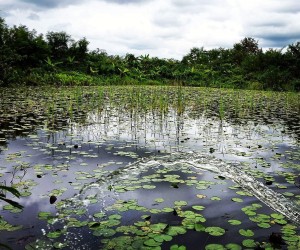- When it comes to water management in mining, what are some of the most important considerations, or best practices. Furthermore, what key technologies are used in this regard?
- How extensively is technology and new methodologies used by mines when it comes to water management programmes, or is the industry somewhat resistant to change?
- What are some of the key components of a successful and environmentally conscious water management programme at a mine?
- What are some of the new technologies either already available or still in the theoretical phase that pertain to water management in general?
- What does the legislation say with regards to water management in mining? Has this law changed in recent years, or is it set to change in the near future?
- What about the role of big data, and all the data collected through the use of technology? How can mines use this to improve their efficiency?
Mining impacts can have an effect on both the quantity and quality of water and that these are then generally split between groundwater and surface water impacts.
When considering water management in the mining industry, whether groundwater or surface water, the first and most important factor to understand and investigate are the potential sources /causes of risks/impacts to the water resources.
Water quantity is usually impacted through dewatering or water supply from both groundwater and surface water sources. Dewatering reduces groundwater resources and exposes it to surface contamination and loss through evaporation. Surface water quantities can be reduced due to storm water management reducing the amount of water reporting to the various catchments as well as direct abstraction from rivers for water supply. Water quality impacts usually result from mine waste produced from the mining activity or the mineral processing or from water discharged from old mine workings. These sources usually lead to chemical contamination of the water sources if not managed and mitigated.
Often new technology is not needed but the biggest improvements can be achieved by applying common sense and existing knowledge. Ensuring that polluted water is fully recycled and re-used, rehabilitating open cast mining areas to encourage surface run off and reduce ingression and the proper design and operation of waste facilities are examples of where the mining industry impact on quantity and quality can be greatly improved. Management of surface water is done through storm water management and good water balances to reduce discharge to the environment by reusing/recycling as much water in the mining process as possible.
In both national (South Africa) and international cases guidelines for water management are well defined and in place with the International Finance Corporation (IFC) and World Bank (WB) leading the way along with institutions like the World Health Organization (WHO), the Global Reporting Initiative (GRI) and the Carbon Disclosure Project (CDP). As mines have to, or choose to, report on their performance this requires them to better understand their own systems and to conduct better measurement of their consumptions and impacts. The old adage that “you can’t manage what you don’t measure” applies.
For too long the mining companies were not monitored but in the last ±20 years more emphasis has been placed on the conservation and management of water by the IFC and WB. The public reporting of consumption and impacts are now the norm for big companies and everyone around the world with access to the internet can now track performance and make comments. Water reporting has become increasingly important and forms part of the planning for many mining clients trying to reduce their footprint as a result of pressure form the institutions they seek funding from or from public organistions seeking to change environmental behavior. This has led to companies seeking alternative ways of water management and treatment to reduce the impact on both the environment and their own financial well-being. In conjunction with the above, governments have started steadily increasing laws, regulations and guidelines for the management of water. Sadly these are often not properly enforced.
Significant law changes has occurred on liner requirements, classification of waste material to determine the best management options as well as the design of good storm water management systems.
Mining laws and financial institutions funding international projects have placed more emphasis on the lining of waste storage facilities to minimise impacts on groundwater resources. If lining is not to be considered then the waste needs to be treated to ensure that it is benign.
In drier areas in South Africa many companies are now relying on sewage plant outflows as their primary water input.
Examples of new technologies and innovations implemented by mining companies to reduce the impacts as a result of the above mentioned pressure from governments and corporations include:
- Treating waste streams to recover any residual value in them and then to remove sulphide minerals to treat these separately in an attempt to make all the waste benign.
- More deposition of waste back into mine workings to reduce long term waste impacts and fill up voids left by extraction.
- Innovations and changes to the conventional tailing dam designs to reduce vertical seepage and improve liner system while also reducing costs;
- Separating out potential problem elements like arsenic and antimony and treating the smaller and more concentrated waste streams;
- Better regional water management to reduce impacts and ensure that a better and cost effective general solution for all is found.






